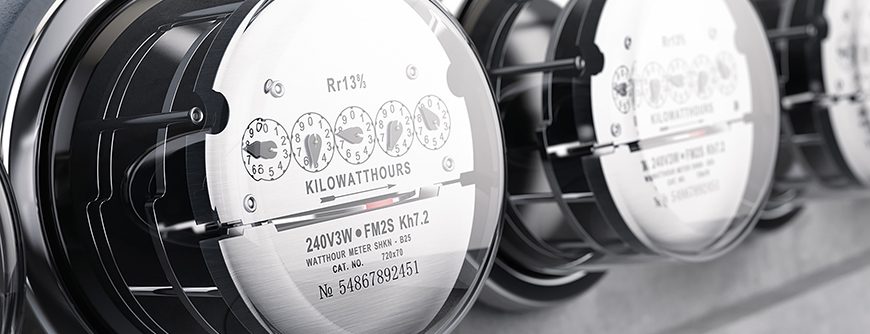コンサンプション・アズ・ア・サービス(サービスとしての消費)は、購入者が製品やサービスを自分で所有、管理、保守することなく、ユーティリティとしてアクセスし、その料金を支払う方法です。
「アズ・ア・サービス」モデル
「アズ・ア・サービス」モデルは、消費者が製品やサービスにユーティリティとしてアクセスできる消費モデルです。購入者は製品やサービスの所有、ライセンス、保守を行わずに、その機能を活用できます。この消費モデルにより、購入者は製品やサービスの機能を「プラグイン」し、必要に応じて支払うことができます。
コンシュームド・アズ・ア・サービス(サービスとして消費される)とは
コンシュームド・アズ・ア・サービス(サービスとして消費される)とは、ユーティリティのように利用できるあらゆる提供形態をさす言葉です。「ユーティリティのように」とはどういう意味でしょうか。電力や電気を自宅に供給する方法を考えてみてください。グリッドを使用している場合は、独自の電力を生成して活用するための機器がない可能性があります。電力会社が管理するグリッドに、電力量を示すメーターが取り付けられた電力線を介してハード配線されています。電力会社は電力を供給し、使用量を測定し、請求書を送信します。
一般的には、コンシュームド・アズ・ア・サービスについても同じことが言えます。これは、サブスクリプション、クラウド、API を通じて必要な機能を取得することを意味します。どのような形態であれ、共通するのはユーティリティベースの提供であり、主な所有権、アップグレード、維持管理が買い手の責任から取り除かれます。
コンサンプション・アズ・ア・サービスの仕組み
サブスクリプションや利用率のいずれによる場合でも、コンサンプション・アズ・ア・サービスは契約に基づいて機能します。ベンダーは、製品やサービスを提供することに同意し、多くの場合、サービスの品質を保証するために特定の SLA を提供します。消費者がサービスの料金や容量を選択する場合は、約束された SLA の範囲内で提供されるという保証が与えられます。その後、消費者は、合意された料金や、そのサイクル中に使用した料金に基づいて、そのサービスに支払います。
コンサンプション・アズ・ア・サービスのビジネスモデルはさまざまです。上記の家庭用ユーティリティの例えを考えてみましょう。これは消費ベースの商業モデルです。しかし、サブスクリプションベースの商用モデルはどうでしょうか。
例えば、ケーブルやインターネットのプロバイダにハード配線されているとします。その費用は、あなたが同意した月額定額パッケージ(例えば 200 チャンネル)に基づいて請求されるかもしれません。これは、サブスクリプションベースの商用モデルによく見られます。
消費ベースの商用モデルがサブスクリプションベースの商用モデルより優れている点
消費ベースの商用モデルには、サブスクリプション以上のメリットがあります。それは、柔軟性です。
例えば、電力会社の料金がサブスクリプション方式で請求され、毎月定額だったとします。メリットは、利用した分だけを支払うことです。
消費ベースの IT とは
消費ベースの IT は、IT 部門が主要な機能をサービスとして消費するのに対して、自社で管理することをさします。カテゴリには、IaaS(インフラ・アズ・ア・サービス)、PaaS(プラットフォーム・アズ・ア・サービス)、SaaS(ソフトウェア・アズ・ア・サービス)などがあります。これには、消費ベースのデータ・ストレージ、バックアップ/リカバリ・サービス、クラウド・サービス、セキュリティ監視などが含まれます。この傾向は、IT プロフェッショナルの多忙な作業や管理作業を削減し、管理を減らし、より革新的な作業に集中することを可能にしています。
STaaS とコンシュームド・アズ・ア・サービス:違い
ストレージ・アズ・ア・サービス(STaaS)は、消費モデルの一例です。特に、顧客がオフプレミスのストレージ容量に支払うためのモデルです。STaaS とコンシュームド・アズ・ア・サービスの違いは、STaaS がストレージ容量、可用性、テラバイトあたりのコストなど、ストレージ・サービスに特化していることです。
STaaS の「サービス」とは、顧客が独自のストレージ・ハードウェアやデータセンターを管理する必要がないことをさします。顧客は、ストレージの容量を指定しなくてもよく、使用するものに対してのみ支払うことを選択し、ストレージの予測と予算管理の両方において柔軟性を高めることができます。
「コンシュームド・アズ・ア・サービス」モデルのメリット
コンシュームド・アズ・ア・サービス・モデルは、購入者に多くのメリットをもたらし、そのほとんどがシンプルさ、柔軟性、コストに関連しています。
第一に、アズ・ア・サービスを利用する方が、ゼロから構築するよりも、導入と立ち上げが容易です。消費者が事前に大規模な買収を行ったり、より多くの人員や専門家を雇ったりする必要はあまりありません。例えば、データ・ストレージ容量を増やすために STaaS を購入した場合、独自のラックやアレイを購入したり、ストレージ管理者を雇ったりする必要はありません。シンプルなのは、企業のフットプリントやワークロードを拡大することなく、ストレージ・アズ・ア・サービスを活用できることです。
第二に、「コンサンプション・アズ・ア・サービス」モデルの柔軟性は、サービスを多くのリフトなしで迅速かつ容易に拡張またはダイヤルバックできることを意味します。新しいコンポーネントを物理的に追加したり、削除したりしなければ、企業が成長にあわせてサービスを強化したり、ニーズの変化に応じて後退したりすることが容易になります。
第三に、価格モデルとコストの透明性は、企業が不要なものに対して支払わないようにするメリットであり、無駄や過剰支出を防げるという利点があります。
最後に、保守とサポートが組み込まれます。「アズ・ア・サービス」モデルは、多くの場合、契約や厳格な SLA に基づいており、ユーザーではなくプロバイダに保守、更新、パッチの負担がかかります。ハードウェアの保守を週末に行う必要がなく、常に最新バージョンを利用可能です。
コンシュームド・アズ・ア・サービスのモデルは、消費者にとって有利なだけでなく、ベンダーにとっても非常にスケーラブルなビジネスモデルです。
コンサンプション・アズ・ア・サービスの欠点
利用されるサービスの種類やカテゴリーによっては、考慮すべきデメリットがあるかもしれません。IT およびソフトウェア・サービスの場合、ロックインや契約上の義務、ニーズの管理や予測の追加、オフプレミス・データの保護におけるセキュリティ・リスクやギャップ、予測不可能な時間における超過料金や性能の抑制などのリスクが考えられます。
コンサンプション・アズ・ア・サービスが優れている理由
組織が俊敏性、コスト効率、手間のかからない新しい機能、製品、サービスの導入方法を模索している場合、コンサンプション・アズ・ア・サービスは、大規模な先行コストやコミットメントよりも優れたルートとなります。アズ・ア・サービスの利用は、顧客に柔軟性と拡張性の高いビジネスモデルを提供します。
従量課金制の STaaS「Evergreen//One」でストレージをシンプルに
Evergreen//One(旧称 Pure as-a-Service)は、Evergreen アーキテクチャ上に構築された、業界で最も信頼性の高いストレージ消費サービスです。オールフラッシュ・インフラのセキュリティと性能により、パブリック・クラウド・ストレージの俊敏性と柔軟性を提供します。チームは、ビジネス成果をもたらすプロジェクトに集中できるため、ストレージの管理やプロビジョニングに関連する複雑さやコストを事前に排除できます。また、実際の消費額が請求されるため、使用金額のみを支払うことができます。
Evergreen//One は、IT リスクを軽減しながら、財務の柔軟性と運用の簡素化を実現します。


